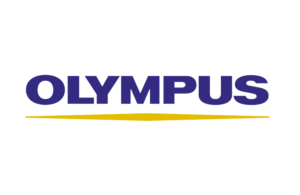
[Photo by Martin Sanchez on Unsplash]
Medtech industry revenue, research spending and employment declined in the first year of the COVID-19 pandemic, according to a Medical Design & Outsourcing analysis of financial data.
Total sales, R&D spending and employment for the world’s largest medical device companies declined in 2020 and early 2021, according to a Medical Design & Outsourcing analysis tallying the ongoing pandemic’s initial toll on the industry.
To compare performance before and during the pandemic, MDO used the financial data that we’ve historically gathered to rank our Big 100 companies in the last three years. The majority of these companies reported full-year results for 2020; others operate on a fiscal year and reported annual results in the first half of 2021.
Some companies are not in this year’s Big 100 but were included in the analysis because they were ranked in pre-pandemic years. The handful of companies that joined this year’s Big 100 list are excluded from this analysis because they were not previously ranked.
Aggregate revenue for approximately 100 of the largest companies in medtech dropped 1.2% in 2020 compared to 2019. Revenues for this group totaled nearly $415.3 billion in 2020. Medtech’s biggest companies made $420.3 billion and $374.4 billion in 2019 and 2018, respectively.
Some soared, others survived
Companies that increased their sales the most mainly were in diagnostics and imaging, but not exclusively. Two diabetes technology companies in the top 20 companies made significant gains, with Dexcom reporting a 30.5% sales increase compared to 2019 and Insulet posting 22.5% sales growth in that same time.
Companies that thrived and reported significant sales increases during the pandemic include: Fisher & Paykel Healthcare, Dräger (medical division), Danaher (life sciences and diagnostics segments), Ambu, Masimo, Konica Minolta (healthcare segment), BioMerieux, Getinge, Cardiovascular Systems and ResMed.
Orthopedic companies and other elective procedure device makers were at the middle to the end of the list. The Centers for Medicare and Medicaid Services (CMS) recommended postponing elective procedures to preserve personal protective equipment in March 2020. Analysts expected the move to affect companies specializing in devices for higher-acuity procedures, like cardiovascular devices.
CMS relaxed the guidelines in June, stating that hospitals could resume procedures on a case-by-case basis while observing federal and state orders for keeping adequate facilities, workforce and PPE available for COVID patients. However, the Delta variant wave would soon dash hopes of a return to normal, as critical care for patients further delayed more routine procedures.
Medtronic — the industry’s top revenue earner — reported more than $30 billion in sales during its first pandemic year and ranked at 31 for its revenue growth during the pandemic. The Fridley, Minnesota-based medtech giant had a 4.2% sales increase from 2019 to 2020 after sales shrank 5.4% between 2018 and 2019.
Delivering prepared remarks in late May, Medtronic CEO Geoff Martha announced fourth-quarter results that showed “continued momentum” at the end of fiscal 2021.
“Our recovery improved throughout the quarter, with most of our markets returning to near normal, pre-COVID growth rates,” he said, as he and other industry leaders detailed relief from the pandemic that would soon prove to be short-lived.
Two firms, two extremes
Fisher & Paykel Healthcare had the most growth from 2019 to 2020 with 53.8% sales growth during the COVID-19 pandemic. The Auckland, New Zealand-based company had a sales growth of 12.3% from 2018 to 2019 before the pandemic. Fisher & Paykel Healthcare makes devices for acute and chronic respiratory care, surgery and sleep apnea, including breathing circuits, chambers, masks, nasal cannula and more.
“The unprecedented result was largely driven by the hospital product group. This includes products for invasive ventilation, noninvasive ventilation and surgery, as well as the hardware and consumables used to deliver Optiflow nasal high flow therapy,” Fisher & Paykel Chair Scott St. John and CEO Lewis Gradon said in the company’s annual report for the year ended March 31, 2021.
The largest sales decrease was at RTI Surgical, which reported a 67% drop after selling its OEM business to Montagu Private Equity and rebranding itself as Surgalign. At the end of 2020, the spine tech company said COVID-19 caused significant disruptions, and warned that patients may continue to avoid surgeries even after the pandemic subsides.
 Olympus Group’s medical business posted the largest organic revenue decrease at 33%. The two divisions of the medical business — endoscopic and therapeutic — accounted for 86% of total revenue for Tokyo-based Olympus.
Olympus Group’s medical business posted the largest organic revenue decrease at 33%. The two divisions of the medical business — endoscopic and therapeutic — accounted for 86% of total revenue for Tokyo-based Olympus.
“In March 2020, when the impacts of the COVID-19 pandemic had gradually become apparent, we raised additional funding, having decided that securing funds would be our top priority, so we could ensure business continuity and continue to supply products to all our patients and healthcare professionals,” Olympus Chief Financial Officer Chikashi Takeda said in the annual report. “At the same time, we conducted a review of the internal budget on a zero basis, and first worked to curb expenditures. When the market environment showed signs of recovery, we shifted to taking positive steps toward sustainable growth.”
The endoscopic and therapeutic divisions both posted double-digit gains in the fourth quarter, and Takeda said he expected that positive momentum to continue in fiscal 2022.
“Looking back, I can see now that fiscal year 2021was an opportunity to reaffirm our strengths and weaknesses,” he said.
R&D spend slides, payrolls shrink
R&D spending also dipped in the early months of the COVID-19 pandemic. The companies in our analysis spent a little under 1% less on research efforts in 2020 than 2019, or $23.7 billion versus $23.9 million. Both figures are still far higher than the $17.2 million of R&D spending by the group in 2018.
NovoCure claimed the biggest uptick in R&D spending, at 67.1% more in 2020 than 2019. It logged $132 million in R&D efforts in 2020, $79 million in 2019 and $50.6 million in 2018.
Three companies — Nevro, Bio-Rad and Invacare — reported R&D reductions of approximately 23% year-over year, the sharpest decrease on the list.
The companies in this analysis also employed 49,291 fewer people compared to 2019. The loss represents a 3.7% decrease in employment compared to 2019, when the top 100 companies that disclose headcounts together employed a combined 1,331,122 people.
Dexcom and Insulet increased their workforces by 443.8% and 40.7% in 2020. Dexcom, which employed 3,826 people in 2019, hired more than 1,600 people in 2020 to bring its headcount to 5,500. Insulet grew its headcount from 1,350 people in 2019 to 1,900 in 2020.
With COVID-19 vaccinations approved for most Americans and the Delta variant wave on the decline, there is renewed optimism that business conditions will continue to normalize in the months ahead. MDO will continue to track these companies for further analysis in 2022 and beyond.
Managing Editor Jim Hammerand contributed to this report.